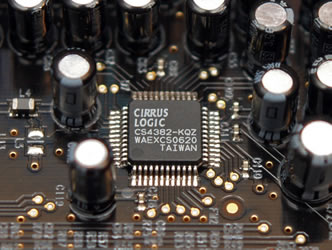In this digital age, we know almost every kind music formats come in digital format: CD, MP3, AAC and etc. However, on the contrary, every type music “playback” devices are analog: speakers and headphones. Therefore, no matter how high your digital music file’s Bit-rate is, the audio device will have to convert it to analog audio signal before you can hear it. We call this process “Digital-to-analog Converter”, in short, “DAC”.
But wait; isn’t DAC already included in the audio devices? Why do I need a standalone DAC?
Answer is simple, standalone DAC offers the easiest and probably the cheapest way to upgrade your music listening experience.

CS4382 DAC on Sound Blaster X-Fi Fatal1ty
Why? Because the “build-in” DAC in most audio devices are not good enough. Let’s take computer sound card for an example: the cost of the DAC in 99% sound card is less $1. For $1, how good can the digital to analog conversion be? Not to mention the “noisy” power supply in the computer, the signal interference, the “non-audio grade” components and etc. As the result, the audio output on computer is noisy, lack of clarity and not very transparent.
Same thing happened to most of other audio devices: DVD player, Blu-ray player, network media player and laptops.
We are all too focused on the “digital” specifications, and forgot the “digital-to-analog converting” part is as important as the digital part, and the DAC is the key element to the sound quality. A properly designed external DAC will greatly enhance your music listening experience, it is not an assumption, it is a fact.
Comments are closed.